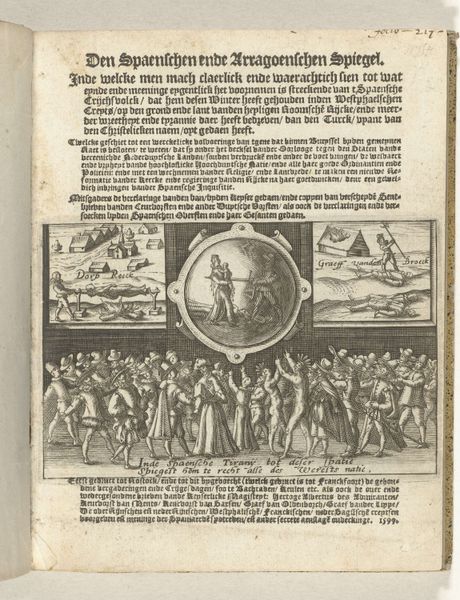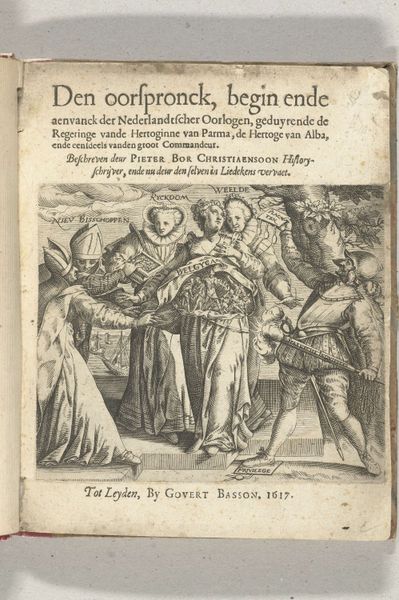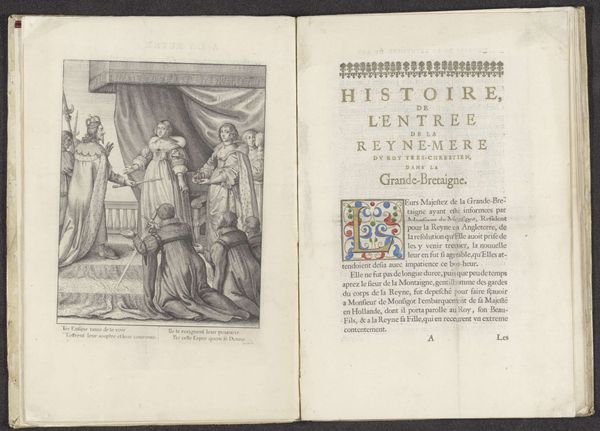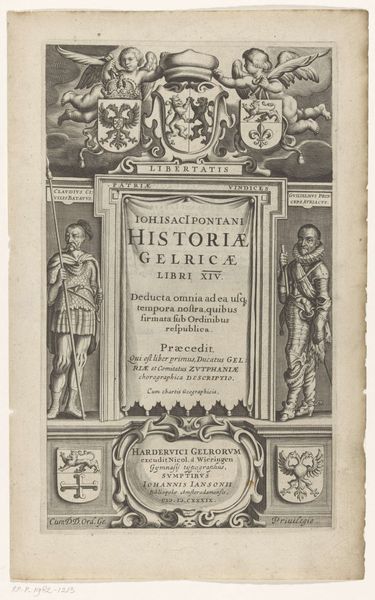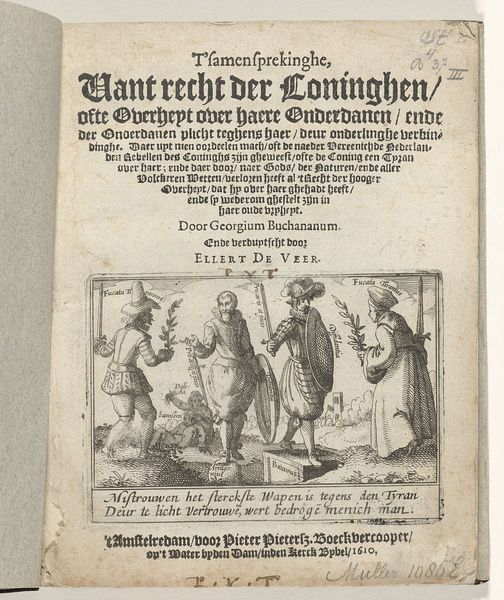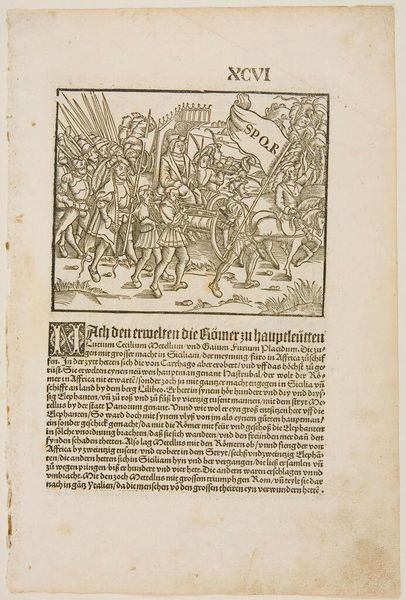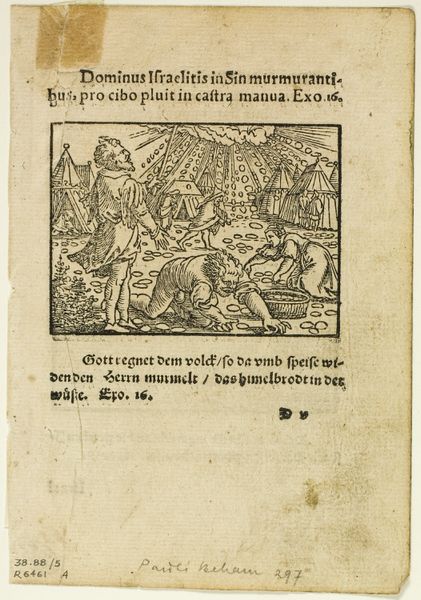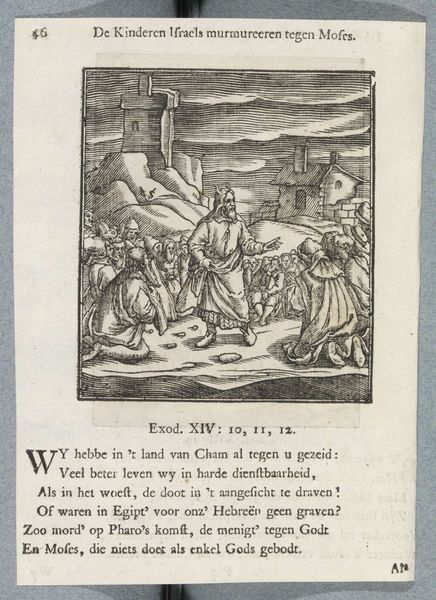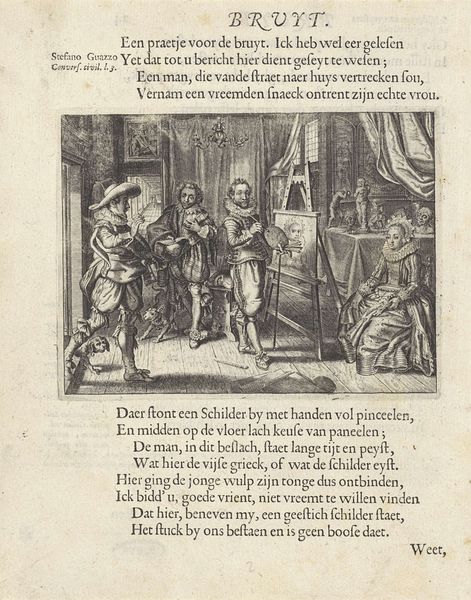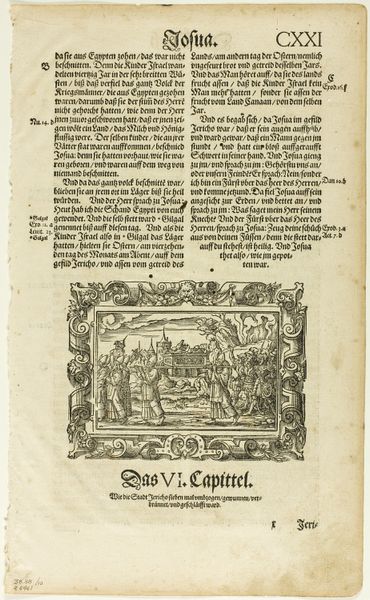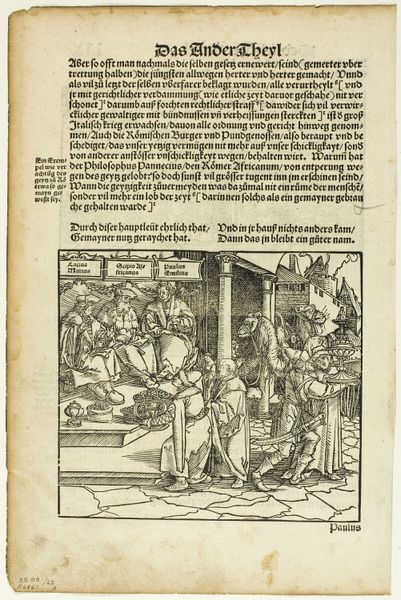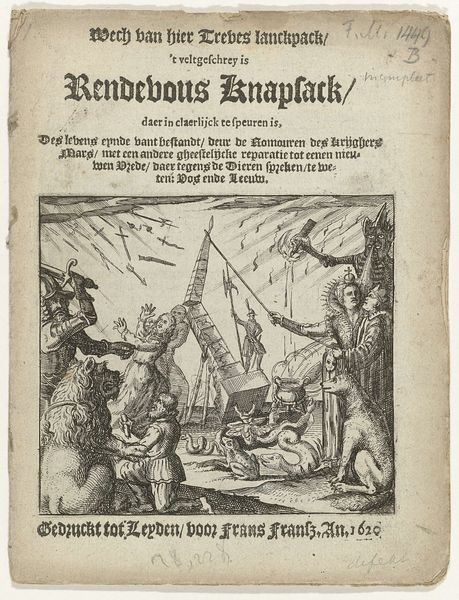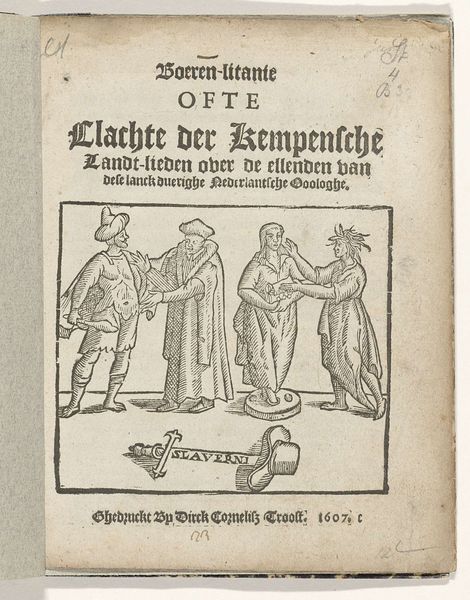
Titelpagina van het pamflet Tragedische Historie van de moord op Sebastiaen de la Ruelle, burgemeester van Luik, 1637 1637
0:00
0:00
anonymous
Rijksmuseum
print, engraving
#
narrative-art
#
baroque
# print
#
history-painting
#
engraving
Dimensions: height 188 mm, width 136 mm
Copyright: Rijks Museum: Open Domain
Curator: Here we have the title page from the pamphlet, "Tragedische Historie van de moord op Sebastiaen de la Ruelle, burgemeester van Luik, 1637." It’s a print dating back to 1637, currently residing here at the Rijksmuseum. What are your initial thoughts? Editor: Bleak. There's a palpable sense of dread emanating from this engraving. The staging of figures seems intentionally awkward, drawing attention to the vulnerability of the central character, kneeling. Curator: The pamphlet details the tragic history of Sebastiaen de la Ruelle's murder. La Ruelle, as the mayor of Liège, held considerable social and political influence, and his assassination had profound ramifications. Consider it within the broader narrative of political turmoil in 17th century Europe. Editor: Indeed. You can see the materials themselves – the paper, the ink, the engraving technique – speaking to a culture grappling with violence. Look at the stage. We are witnessing a constructed narrative meant for consumption, paralleling a very public, very gruesome act. Curator: Absolutely. It highlights the performance of power, the theatricality of violence in the public sphere. Moreover, note how class plays out, the difference in clothing, that separates executioners from their victim. Editor: And the distribution! Printed in Amsterdam, but covering events in Liège. It emphasizes the crucial role of print in shaping public opinion and the dissemination of narratives about power. The material existence of this object provided evidence for those trying to grapple with the act. Curator: And think of the artist, anonymous as they are. They were deeply implicated, making visible for public consumption the bloody event for mass interpretation. The distribution network gave power to the once voiceless as they learned of the news and could engage. Editor: You can practically feel the weight of this tragic event hanging over every line of the engraving. These ephemeral things can carry the weight of social struggle. Curator: Agreed. Hopefully, in thinking through the sociopolitical factors behind its materialization, it resonates for a deeper understanding of violence that may allow a framework to better recognize its insidious spread in modern-day. Editor: Yes, for me it’s a reminder that even seemingly small, unassuming objects like this can offer a tangible link to larger social struggles and political machinations of the past. The processes by which it became what it is gives form and voice to those previously not seen or heard.
Comments
No comments
Be the first to comment and join the conversation on the ultimate creative platform.
